Are You A Roomgirl? Because Everyone's Dating Their Roommate Now
In which we discover things in our work chatroom.
A Man: My roomgirl works at [REDACTED] so just killing time before I go to an all-you-can-eat sushi place.
Choire: …so that’s what they’re calling it now.
Another Man: Wait. What’s a roomgirl, is that like a wife… or a Roomba.
A Man: Roommate-girlfriend, which is different than girlfriend you live with.
Choire: It’s all about Which Came First.
Another Man: Still confusedddd.
A Man: Right. So if you room with someone and make the mistake of marrying them they are forever a RoomPerson.
Another Man: Oh! I’m doing a similar thing: my now-girlfriend was a roommate first but we don’t live together anymore.
A Man: That’s the right thing to do. But I’m too lazy.
Emma: There are two roomgirl situations here??? Trendpiece.
Another Man: Roomgirl. I like it and can guarantee the wonderful person I’m dating will not like it.
Mike: Omg, Modern Love.
Emma: In Their Roommates, A Girlfriend
Choire: Wow. This roomgirl thing is real?
Another Man: I even know a third.
Another Man: Millennials Too Fucking Lazy to Find Significant Others Outside Their Own Apartments
A Man: That is correct.
Edith: “New Girl” lol.
Emma: “New Girl” is the original roomgirl.
Emma: Jeff Hooligan, 34, was having a hard time meeting women in his regular Clinton Hill haunts.
Mike: Cleaning the Bathroom, the Highest Form of Flattery
Choire: Roomgirls Of New York
A Man: One millennial dude, speaking under the condition of anonymity, cited ‘Skyrim-related emotional exhaustion.’
Another Man: “I just don’t really like leaving my apartment or meeting new people,” said one man, 28, who asked not to be identified because he is afraid of his roomgirl.
Choire: Exactly! It begins in literal laziness! Which I respect.
Another Man: You also get to skip the awful first couple months of dating.
Emma: Damn.
Another Man: Go right to watching TV on the couch and having uneventful sex. Just the way I like it.
Emma: In Their Lease, A Contract On Love
Choire: Knock Knock, Who’s… Oh Hello There
Mike: He Paid for Dinner, She Paid for the Utilities
A Man: Whoa how did you know that.
Choire: The Chore Wheel? Or the Score Wheel
Emma: In Prospect Heights, A Reason To Ditch The Tie On The Doorknob
Choire: Divided By Walls, They TK Bathroom TK Bedroom Something
Another Man: Once A Roommate, Now A Playmate
Choire: She Knows When You Are Sleeping, She Knows When You Are… Well, Everything
A Man: There should be a series of exclusive interviews with the unfortunate third roommate in these situations.
Mike: A Room With a Woo (sorry)
Another Man: A Bedroom Lies Empty, But Its Tenant Fulfilled
Choire: The best thing is, all these situations end happily! So no one can feel bad about it ever at any point!
The Quiet Revolution Of 'The Real World: EX-plosion'

Considering it’s humanity’s longest-running reality show, “The Real World” has been remarkably stagnant structurally. For 28 seasons over 22 years (!), “The Real World” was thus: several attractive people of varying degrees of interestingness between the ages of 18 and 26 are picked to live in a large house, outfitted by Ikea, in a city. This season, the 29th, which takes place in San Francisco, is different in two major ways. One of those is advertised, constantly: This season’s seven cast members are each recently out of long-term relationships, and halfway through the season, all of their ex-boyfriends and -girlfriends move into the house as well (the season is titled “The Real World: EX-plosion” rather than “The Real World: Back to San Francisco,” as would be expected). The second difference is not advertised, but is much more fun for those of us who took Cultural Studies classes in college and have said the word “metanarrative” with only the barest required amount of self-deprecation: “The Real World” has broken down the walls between cast and production.
The biggest structural changes of the entire series, prior to the current season, came in the Miami season, which was the first to require the cast work some kind of part-time job, and in the Brooklyn season, when the number of housemates moved from seven to eight. Not big changes! “Survivor” and “Fear Factor” and “The Amazing Race” and “Big Brother” and every other competitive reality show waited only a few seasons to institute gimmicks, and other “get strangers and put them in a house” shows flamed out early (“Jersey Shore,” for example). “The Real World” is as close to iconic as reality television gets; it seems almost disrespectful to mess around with the format. (That’s what “The Challenge” is for, anyway.)
So I saw “The Real World: EX-polosion” as the last desperate gasp of a venerable show, a show that for years had existed mainly as a means to find contestants for the much more successful “The Challenge” series, which pits cast members from all of the seasons against each other in a series of (these days, mostly muscly physical) challenges. And it might be the last; for some, it’s hard to watch this season, the second to be filmed in San Francisco, while remembering the first San Francisco season, the show’s third season overall and the season that really broke it into the mainstream. That was the season of Puck, the nose-picking, anarchic, bike-messenger street-rat, a San Francisco native. That was the season of Pedro, the HIV-positive lecturer and Cuban immigrant. (And some other people.) It was also very much about San Francisco; Puck could not survive anywhere else, for one thing. As much as reality TV can be important, the original San Francisco season of “The Real World” was important.
The new season? Not so much. It’s the usual array of hot 20-somethings, football players and models and such. The show could be filmed in Indianapolis or Ulaan Baatar for as much as we see of San Francisco; I lived in San Francisco and had no idea the anonymous bottle-service clubs the cast goes to even existed there. It is, in other words, a totally standard modern-era season of “The Real World,” except more so, because of the “let’s move all their exes in!” gimmick, which merely doubles the number of football players and models and cabs needed to transport them from their giant Ikea house to the anonymous clubs.
EXCEPT.

MTV, or Bunim-Murray Productions, or whatever, has decided to relax their stance on production appearing onscreen. In previous seasons, production would only appear in dire situations: when one cast member assaults another and needs to be kicked out of the house, for example, or, memorably, in the Seattle season, when one of the cast members had a tumultuous relationship with the casting director for the show. The casting director in question was even fired for that dalliance! If you saw a cameraman or a boom mic it was an accident; if you heard a producer’s voice, you knew something major was going to happen.
This season, production is all over the house. You see cameramen everywhere. You can hear producers ask the cast questions in the talking-head segments and tell the cast things they didn’t know themselves in order to stir up shit. After fights or hookups or whatever, the cast mentions that this would make great television. This has surely happened before, but it never aired; “The Real World,” by virtue of its early pedigree as an episodic documentary, always had a loftier sense of self than the content warranted. Now it’s down in the gutter, where it should be, messy and chaotic.
By showing us the artifice of the show, it is, oddly, the most real season of “The Real World” since the first. Reality and documentation have permeated our culture to the point where we very much do not need the artifice to be kept from us in order to trick us into thinking the scenarios depicted are real. Reality is having a camera and a mic pointed at your face, whether it’s on loan from Viacom’s production warehouse or an iPhone.
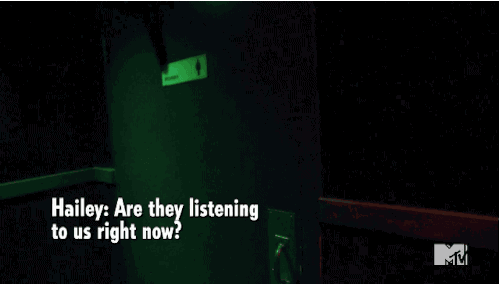
This is all a more subtle change than doubling the number of roommates, but it’s subtle by a small order of degree; it reads like an extension of the final scene of the least-real-seeming reality show ever, “The Hills,” in which it was revealed that the final shot of the series was filmed on a Hollywood set. I like to think that was a smart nod to the viewers who now understand that reality both is and isn’t real, and that the real question isn’t “how much of this is real” but “what even is ‘real’?” It could also be that the producers are just getting lazy because who cares about “The Real World” in 2014; although the episode where the exes all moved in was the highest-rated episode of “The Real World” in years, the show hasn’t been impressive on a ratings front for a decade.
Still, it’s certainly a more interesting glimpse at the future of the series, if there is one, than this year’s gimmick, which I can’t imagine will return next season. Several members of this year’s cast were born after the original New York season of “The Real World” aired in 1992; they’ve been shaped by the tropes and characters of the show, even if only in the way they present themselves when they fulfill their birthrights as Americans and get on a TV show of their own. And finally they can air all that out publicly, and let the cascade of cameras, microphones, documentation for all time, truth, fiction, fiction based on truth, truth based on fiction, and all of that based on television, come pumping from of our TVs along with a lot of dubstep and neon. It’s worth watching if only for that.
Get Your Bookshelf (And Your MIND) Right With Muriel Spark
by Jeva Lange

2014 has been called the Year of Reading Women; it should also be the Year of Reading Muriel Spark. Just short of a hundred years since her birth, and nearly 60 since the publication of her first novel, Spark remains as essential as ever. She cannot be reduced.
But that’s not to say a little facelift wouldn’t hurt. New Directions will be revamping and re-releasing eight of her novels here in America later this year, including Man Booker favorites The Driver’s Seat and Loitering with Intent. (My favorite part about the new editions is that when you line up all of the spines together, they make a picture. Can you do that on your Kindle? NO YOU CANNOT. I mean, not yet, who knows what they’re working on.) Not only that — the essay collectionThe Informed Air offers an illuminating ensemble of her inspirations, passions and influences.
A prolific writer until the end of her life in 2006, Spark had plenty of experience to draw from for the essays gathered in The Informed Air. Born in 1918 in Scotland, Spark spent much of her life abroad — first in Rhodesia, where she lived with her husband Sidney Oswald Spark. Mr. Spark was manic depressive and abusive; Muriel eventually fled, although she kept his name when she began writing her fictions (it has “some ingredient of life and of fun” she would say of her surname). Back in the U.K., Spark worked for the British Intelligence during WWII. Afterward, she moved to New York City, then to Italy, where she lived for the rest of her life with her secretary, Penelope Jardine. Jardine herself is responsible for the curation of the essays in The Informed Air, as well as the foreword; it is the perfect primer for newcomers.
Spark’s style is hard to pin down — it’s girlish, but girlish in the sense that it is youthful, playful, and curious, even in its wisest observations. Of course Spark would have denied this categorization, as she denied all labels: Jewish writer, Catholic writer, Scottish writer, female writer. There’s the additional danger that by calling Spark “girlish,” it might suggest that she is a so-called women’s interest writer, which could not be further from the truth. Nor is there anything elementary or juvenile about Spark’s writing. While she did not publish her first book until she was nearly forty years old, a young and unembarrassed wit persists. But her tidy storytelling contains the constant promise of darkness. The New York Times described it accurately as such: “In [Spark’s] writing, evil is never far away, violence is a regular visitor and death is a constant companion. Her themes were generally serious but nearly always handled with a feather-light touch.”

Muriel Spark also had some feelings about cats:
I cannot speak highly enough of the cat, its casual freedom of spirit, its aloof anarchism and its marvelous beauty. The Greeks, observing its fearful symmetry in motion, called the cat ailouros — a wave of the sea. Nothing restores the soul so much as the contemplation of a cat. In repose, it is like a lotus leaf. Its contentment is mystical; anatomists have still not discovered what or where the cat’s purr-box is.
(Finding reverent cat quotes in Spark books is a little bit like a really great Easter egg hunt.)
Spark was formally recognized for her contribution to literature in 1993 when she was named Dame Commander of the Order of the British Empire — a stuffy title for a writer with such humor. Although The Informed Air (containing the rest of the cat essay, “Ailourophilia”) and the other books in the collection won’t be released until April, they’re worth preordering if you are forgetful.Othersie, keep an eye out for them when they end up on bookstore shelves — if they’re stacked correctly, they won’t be hard to find.
Is Sitting Around Giving Everyone Diabetes?
“The increasing number of people in developing nations who own televisions, computers and cars might explain rising rates of obesity and type 2 diabetes in those countries, a new study suggests.”
Structure Unappealing

“The still-unfinished floors are high-ceilinged, unencumbered, and spacious enough to host an Ultimate Frisbee tournament, with wraparound views of brick and brownstone landmarks. IBM’s Watson team is moving in, hoping perhaps that the area’s creative aura will enlighten its engineers. The mirrored façade seems to sharpen reflections to a higher resolution than reality itself. Architects love to pretend that reflective structures ‘dematerialize’ — that is, disappear — but Maki’s building is a solid object, black and glossy and timeless as a Steinway grand, expressing itself in an architectural language that is incomprehensible around here.”
— That is perhaps a too-polite way of saying “51 Astor Place is so frighteningly hideous that it makes the Sculpture for Living look like Santa Maria del Fucking Fiore. It’s like the new Cooper Union building is holding your arms behind your back so that 40 Bond can run up the block and take a shit in your eyes. It’s like the ground vomited up glass and metal in an arrangement designed to make sure that the only characteristic one would take away from it was ‘stomp up and down on your testicles until they are a pulpy mass of blood and bruise ugly.’” But maybe language like that is why I am not an architecture writer; I lack the necessary technical vocabulary and studied restraint to convey the correct kind of criticism. Anyway, the building is aesthetically displeasing.
Photo by edenpictures, via Flickr
Chris Morris, So Much To Answer For
“A group of Sunni militants attending a suicide bombing training class at a camp north of Baghdad were killed on Monday when their commander unwittingly conducted a demonstration with a belt that was packed with explosives, army and police officials said.”
Dogecoin Is Real -- And They Party With Dogs
by Dan Glaun
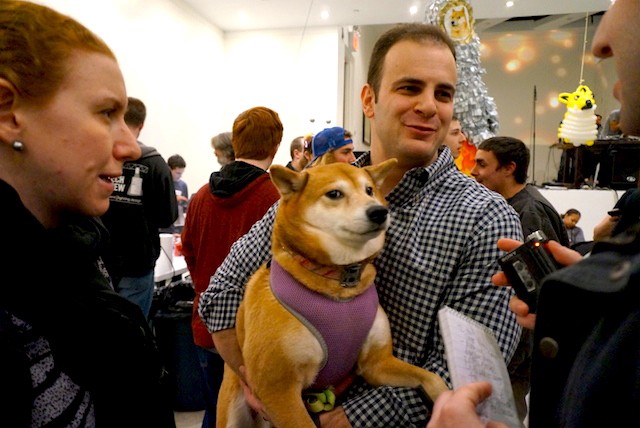
At first glance, Friday night’s meetup at the Bitcoin Center’s downtown offices could have passed for any other start-up party. The crowd skewed young, many in hoodies and looking barely grown out of their Chuck Taylors, but mixed in were members of the blazer-and-blue-jeans set and even a select few people above the age of 35. Most, clustered in groups beneath the Center’s green-lit high ceilings, stayed largely indifferent to the DJ spinning dance tracks.
But there were some things that were odd. First, there was no booze, due to the small but vocal contingent of grade school kids in attendance. Second, there were the dogs. Also, the people dressed as dogs.
It was the first Dogeparty — an event for fans of Dogecoin, a digital currency themed around the ubiquitous Shiba Inu meme and which, at current exchange rates, has a market capitalization of over $50 million.
Doge may be a joke, but Dogecoin is very real. It’s a friendly parody of Bitcoin, the pioneering digital currency that was valued at $25 a year ago, $848 a month ago, $808 a week ago and $663 today. Both currencies — and the dozens of other digital monies that have been created in recent months — rely on an innovation in cryptography called block chain technology that allows online transactions to be verified without a middleman, essentially cutting out the banks or payment services that have traditionally made sure online money goes where it’s supposed to.
Where Bitcoin has a community that often treats digital currencies as a libertarian political movement to supplant government-backed money, Dogecoin’s users embrace their investment’s jokey origins. Dogecoin’s Reddit forum is filled with users ‘tipping’ each other comically large sums — 1,000 Dogecoins are currently worth about $1.20 — for little to no reason, raising funds for charity and writing in the doge meme’s signature sentence fragments. Tied into the lure of what users call cryptocurrencies are the communities that accompany them in tech-friendly forums like Reddit.
Among the first to arrive at the party was Travis Gehret, an early adopter of Dogecoin when it launched almost exactly two months ago, on December 8, 2013. It was the community’s friendly and relentlessly upbeat atmosphere, worlds away from Bitcoin’s Ayn Rand-meets-Alan Turing self-seriousness, that attracted Gehret to Dogecoin. Gehret, an IT professional who now runs an online registry of businesses that accept Dogecoin, contributed to the Dogecoin fundraising drive for the Jamaican bobsled team’s trip to the Sochi Olympics — an effort that raised the equivalent of $30,000 (and also won the currency worldwide press coverage and introduced a generation of young techies to Cool Runnings.)
“I’ve always known about Bitcoins and I wasn’t an early adopter of them, and when I heard about the Dogecoins I just thought it was hilarious,” Gehret said. “I love the doge meme and I joined the community on Reddit. Everyone’s so friendly — it’s really about community.”
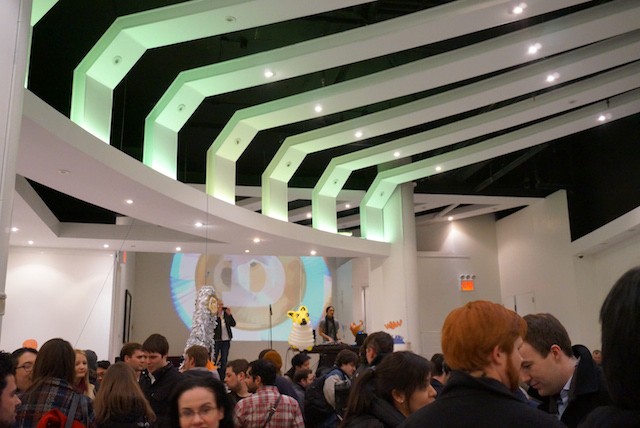
As with Bitcoin, Dogecoin’s ‘miners’ are rewarded with coins when their computer systems run scripts to solve complex mathematical problems. Those coins can then be stored in digital wallets and traded on online exchanges, or spent at the growing number of business that accept them (and who generally convert them straight back into dollars, to avoid the wide swings in value typical of these markets).
That’s the short version of Dogecoin’s technical backbone. But it’s the currency’s memetic skin that has granted Dogecoin unprecedented growth and amused attention from both investors and mainstream media. (Its market capitalization has blown up from about $3.5 million following its introduction nine weeks ago to about $51 million today, and the Dogecoin Reddit forum now has 57,000 subscribers.) The coin’s mascot is a manipulated photo of a Shiba Inu.

Doge itself is a remarkably popular internet joke with a longer-than-usual shelf life. The format is simple. Doge’s Shiba Inu is a canine ingenue in a constant state of awe at his or her situation, who expresses herself in subliterate sentence fragments. It’s a versatile premise. Should one wish to comment on the issues of the day, doge is willing and able. Cut and paste her face onto the George Washington bridge; “Such traffic,” the shibe might say, “Wow. Very Christie. Many scandal.” Instant, social-media-ready wit — easily recognizable and accessible to anyone with basic knowledge of Photoshop.
Ben Doernberg, an organizer of Friday’s meetup and the MC of the night’s high-stakes dance battle — more on that later — considers Dogecoin greater than just a parody or an investment opportunity. Doernberg is a Dogecoin evangelist who comes across more as a well-meaning think tank fellow than megachurch pastor, with a theoretical yet earnest bent befitting his Wesleyan sociology degree. For him, the currency is an initial step of a broader social project — one that, given its jokey origins, has serious aspirations for how people connect and do business over the internet.
“The most important thing about it is that the community behind it is all about the joy of life and generosity and excitement,” Doernberg said Thursday in an interview. “When everything in our culture is so much about people being ironic or apathetic, it’s really powerful when people get behind something sincerely. I think it takes something as as goofy as doge to get people to let down their guard a little bit.”
Doernberg cited the positivity-first models of aggressively upbeat (if also aggressively capitalist) media groups like BuzzFeed and Upworthy as doge’s kindred spirits, but lest that set anyone’s smarm sensors blazing, he emphasized that the attitude was not an empty gesture. In addition to its well-publicized funding of the Jamaican and Indian Winter Olympic teams, the Dogecoin Subreddit has raised $30,000 for children’s service animals as well.
While Doernberg was quick to point out the community’s charitable efforts, it took longer for him to address the $50 million elephant in the room: That the currencies quick rise has drawn the attention of scammers and get-rich-quick traders. In its first month, hackers stole millions of coins from Dogewallet, an online coin storage service, wiping out some early investors.
Dogecoin’s community stepped in to raise funds for the hacking victims, Doernberg said, adding that the currency’s friendly culture was itself a bulwark against cynical scammers. “It’s something that’s viscerally unpleasant for people who aren’t in it for the right reasons,” he said.
Travis Gehret was one of those victims. He said at the party that he lost his first 1,300 Dogecoins in the attack, a setback that has not slowed his enthusiasm for the currency.
“There are people who really see a potential value for investment,” Gehret said. “I do as well. But I also see a potential to revolutionize currency in general, at least for the Internet.”
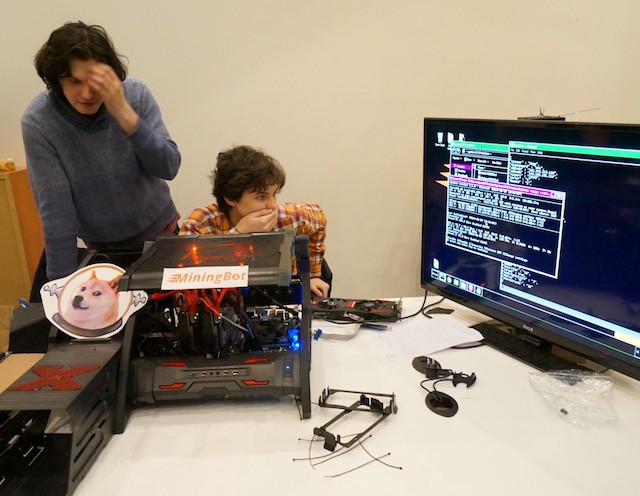
At the party, two shaggy-haired Dogecoin miners sat at a table, watching a computer with a red-lit cooling fan and its guts spilled out make scrip from scripts. Luke Wu of Manhattan Agriculture — a food consulting collective whose website describes its approach as “Fueling Performance & Evolution through a Meta-Modernist view of Ancient Sacred Healing” — was selling a viscous kombucha served in mason jars. Justin Stone Diaz, an Occupy Wall Street veteran, was dressed in what he termed a “vampire squid suit” to protest Goldman Sachs’ many financial tentacles.
There was a study in contrasts among the sellers at the trading table, an endearingly analog setup where Dogecoins could be bought and sold in person. Sandy Santra, an IT professional who said he had been unemployed for two years, was selling surplus Apple accessories at discount prices for “coffee money” and keeping hope that a rise in Dogecoin’s value could offset some of his financial struggles. Next to him a trader named Eric — he would only give his first name — was seeking to trade Bitcoins for about $10,000 worth of Dogecoins at what he described as a below market price. Eric said he worked in tech and finance and had begun trading cryptocurrencies in volume, meeting prospective buyers and sellers at coffee shops in the city to cement deals.
For investors I spoke to, the sheer amount of money at stake was not forgotten amid the memes and charity fundraising. Curtis Dunlap is an intern at the Bitcoin Center, which was co-founded by Nick Spanos in the ground-floor party space of 40 Broad Street and opened its doors on New Year’s Eve. (Spanos was a booster of John Catsimatidis for mayor and is now the CEO of a New York City real estate brokerage service.) Dunlap was outside smoking a cigarette and talking shop with a fellow enthusiast, and rolled the names of other infant cryptocurrencies off his tongue. The trick now is to guess which will explode and which will sputter. “It’s the wild west,” Dunlap said.
One of the party’s most popular guests was a different Sandy — a Shiba Inu, rescued from a Mid-Atlantic shore community following 2012’s hurricane and carted in for the evening by her adoptive owners from the Upper East Side. She and the several other Shibas were cooed over throughout the evening. Several attendees were decked out in their own doge costumes. These ranged in commitment from a pair of faux ears to a full yellow onesie, with one guest wearing an incongruous but well-received Chewbacca suit.
Hundreds of thousands of Dogecoins were won by costumed participants of an on-stage dance contest, set to an incessant Baha Men remix that could give anyone near-terminal bar mitzvah flashbacks. One lucky investor won the night’s million-Dogecoin raffle. (There was a catch: the winnings had to be spent on a charity project voted on by the audience.)
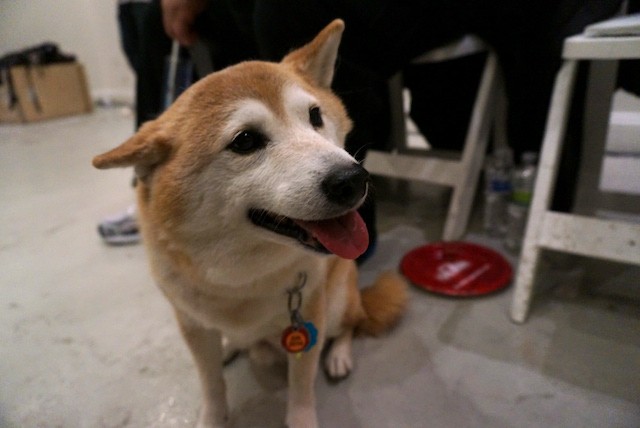
The party ended with a march to Charging Bull, the much-put-upon Wall Street statue. Upon arrival, the bull’s face was covered with a large papier-mâché Shiba Inu mask. The doge head didn’t cover the bull’s horns, giving the statue the aspect of one of the demon dogs from Ghostbusters, but that didn’t deter the Dogecoin fans who crowded around and took pictures. Two cops approached the gathering and warned against climbing over the barricades. The organizers hadn’t asked permission for the stunt, but the cops didn’t appear concerned. One said he’d seen much weirder things.
Dan Glaun lives in Queens and writes things with words. He can be reached at dglaun@gmail.com or @dglaun on the Twitters. Photos are by Sherry Ng.
What Was Flappy Bird?
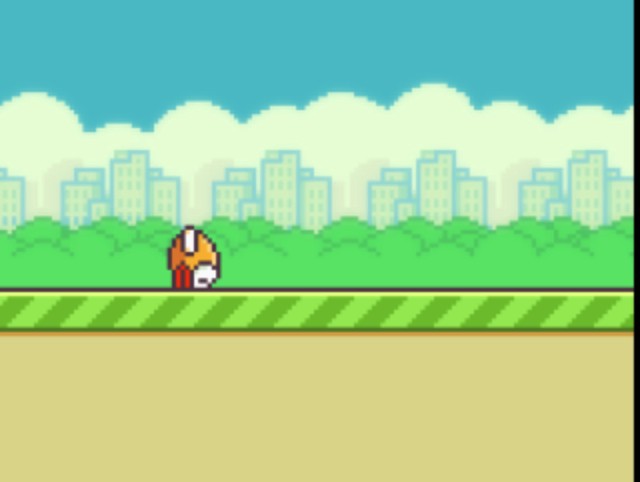
Flappy Bird (2013–2014) was a game for the iPhone which, in the span of perhaps a month, half a year after it was uploaded, rocketed up the charts of the App Store and became The Game of the Moment before being deleted by its creator for reasons that remain unclear. It was a maddeningly difficult challenge in which you played a small bird, cursed to move forward, forced to tap the screen to stay afloat. You existed in a world of pipes: Pipes grew upward from the ground, emerged downward from the heavens, never to meet. Only by drifting through the narrow space between the pipes could you survive.
The bird looked like those circular leaping piranhas from the Mario games. The pipes looked like those pipes from the Mario games. The ground, shown as a cutaway with beige dirt and a thin strip of striped green grass, looked like the ground from the Mario games. But Flappy Bird was unrelated to the Mario games; it was made by one dude from Vietnam, who says he created it in two or three days, which sounds about right. Joe Bernstein at BuzzFeeᴅ writes:
Purposefully or not, it scans as a parody of the bird games, Angry Birds and Tiny Wings, that dominated, and continue to dominate, the paid section of the app store. Everything from the inane name to the single, simple mechanic feels like a piss-take. Though the game is made by an apparently sincere developer from Hanoi, it could just as easily be the work of an indie mischief-maker.
Flappy Bird was terribly difficult; you got one point for each pipe-gap you flew through, and it was not uncommon to score only two points, or one point, or no points at all. Your entire game may have lasted no more than a few seconds. Flappy Bird was free, so dumb garish ads filled the top of the screen, distracting you from a game in which the only way to play was to slip into a zone of mindless concentration. Like many of the smartphone games that dominate our entire lives for a few days, Flappy Bird was a twitch game, a game entirely dependent on reaction time. New pipe gap at the top of the screen: must time trip up there perfectly.
And now it’s gone.
I am sorry ‘Flappy Bird’ users, 22 hours from now, I will take ‘Flappy Bird’ down. I cannot take this anymore.
— Dong Nguyen (@dongatory) February 8, 2014
Nguyen says he is not removing the app due to legal issues, for example the specific legal issue that his game is obviously visually trading on the Mario games. Instead he says:
I can call ‘Flappy Bird’ is a success of mine. But it also ruins my simple life. So now I hate it.
— Dong Nguyen (@dongatory) February 8, 2014
Flappy Bird has now been removed from the App Store. It remains on the phones of those who downloaded it before it was pulled, and some of those phones have appeared on eBay, selling for absurd amounts of money, supposedly.
Or you can just download one of the other games that are basically the same thing. This one looks fine.
RIP Flappy Bird. My high score was 16.
Read About Elevators
This is a fairly diverting piece about the way the elevator changed New York City.
